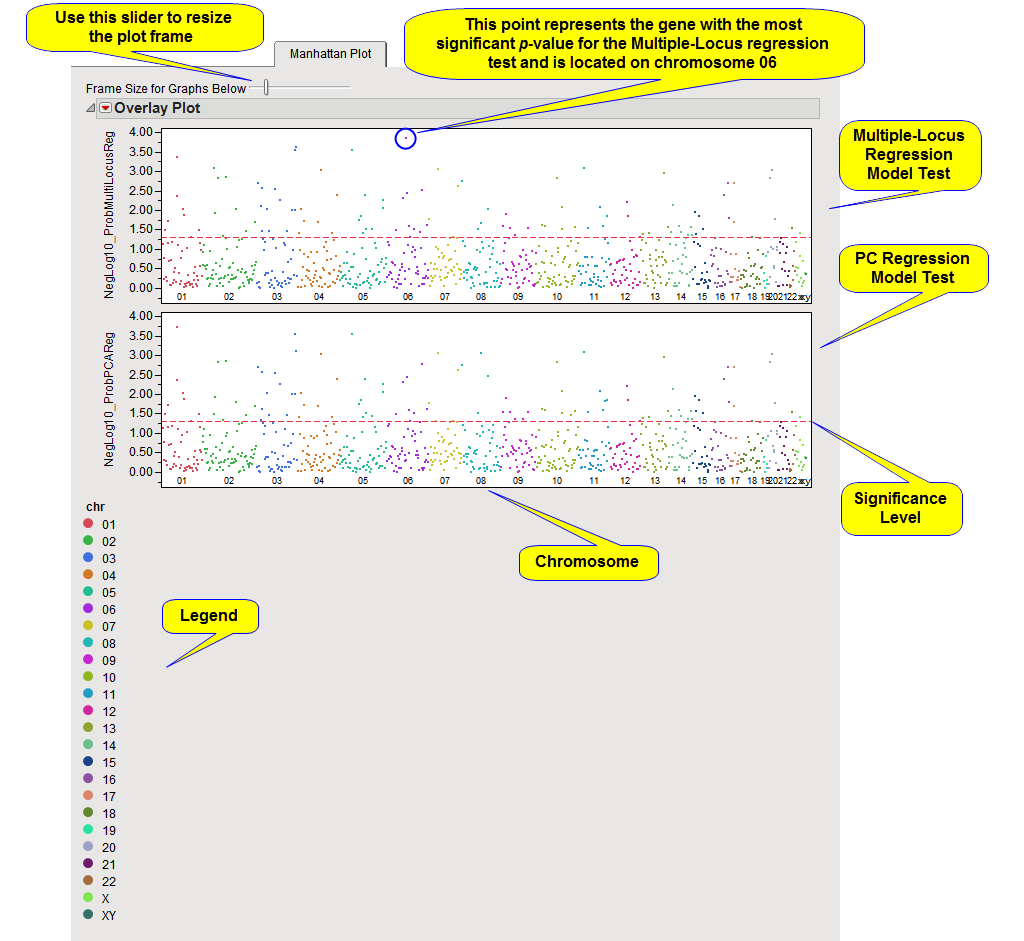When there are multiple annotation plotting groups such as chromosomes, a Manhattan plot is used to show
p-values
for all genes (or other type of annotation analysis groups) from a particular type of test in a single scatter plot.
The
Y
-axis variable is the
p
-value from the
association
test, converted to the
-log
or
-log
10
scale if selected in the process
dialog
. The
X
-axis plots the genes in cumulative order, according to the location of the first
SNP
in the gene, within and across annotation plotting groups.
A horizontal reference line is drawn as a red, dashed line at the significance level that was specified. For
-log
or
-log
10
-converted
p
-values, genes above this line are significant; for
p
-values on the original scale, genes below the line are significant.
A separate plot is created for each association test performed (plots for two different tests are shown above), and if any
BY variables
were selected, a separate chart is displayed for each
BY group
as well.
On this plot or any of the other
p
-value plots, you can mouse-over any of the points on the plot to see the gene's label. When an annotation accession variable is specified when running the process, you can select a point and click on any of the Annotation action buttons -
GenBank Nucleotide
,
UniGene Database
,
AceView Database
, or
dbSNP
- to link directly to the corresponding website to view extensive annotation information about the gene's first
locus
.
